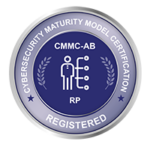Many organizations, such as Spotify, are ditching office spaces and adopting a more flexible work model that incorporates Work From Anywhere policies. At first glance these policies seem to be beneficial for both the employees and the company—giving individuals autonomy over where they live and cutting down the costs of physical office space. But when examining this shift more carefully, a clear result is that while many employees are more productive, it is also glaringly obvious that they are much less protected by the security features they had from their in-office network. This work model transition is also resulting in a notable increase in the number of employees using their personal devices for business purposes, significantly widening the organizational attack surface.
In today’s threat landscape, no organization is safe from a security incident and they cannot rely on built-in security features to protect their corporate data. Cybercriminals are continuing to exploit vulnerabilities in popular software, as seen with the recent Apple zero-day exploit, and conducting sophisticated cyberattacks, making it clear that basic security hygiene, while integral to the overall security strategy, is unable to provide sufficient protection alone. These types of attacks are able to impact thousands of organizations, ranging from small businesses to government agencies. The question is, will your organization be next?
In order to establish more robust security postures, enterprise leadership needs to prioritize securing mobile devices from which employees access corporate or government data. Below are some best practices for organizations on how to implement a mobile security solution that allows them to work smarter, not harder, to ensure their company will not be fall victim of the next widespread cyberattack.
Combine Mobile Device Management with Mobile Security
All too frequently organizations rely on Mobile Device Management (MDM) to serve as a full mobile security solution. MDM allows companies to monitor and gain control over their employee’s devices, but on its own it is unable to provide the necessary level of protection needed to properly secure enterprise data. Enterprises should seek to implement solutions that empower them to unlock the benefits of MDM while optimizing device security and functionality. IT administrators should be able to provide device management on a unified console, track the entire lifecycle of applications, isolate and encrypt sensitive work data, files and apps, enforce security policies, customize policies and profiles for different users, as well as restrict devices to access a single or a specific set of apps.
Adopt a Containerization Approach
By storing enterprise applications—such as email, contacts, calendars, messaging and others—in an encrypted container, enterprises can avoid native vulnerabilities of operating systems and ensure data stored on devices is secured both in-transit and at rest. Container applications are simple to use and manage, and administrators can define security rules and remotely erase corporate data within the container without infringing upon the employee’s personal data.
Integrate Mobile Threat Defense
There are a variety of solutions that provide threat defense capabilities but determining which one is right for your organization can be a daunting task. Instead of implementing multiple solutions across your workforce, enterprises should make sure anti-virus (AV) protection, Mobile Threat Defense (MTD) and Data Loss Prevention (DLP) are incorporated in their mobile security solution and centrally managed in a unified administrative console. With this approach, end-users will remain secure on both managed and unmanaged devices and ensure they are protected before allowing them to access or download sensitive corporate data.
___
With mobile threats proliferating at an alarming rate, organizations should not have to struggle to determine which solutions they need to implement to best protect their remote workforce. SyncDog’s Secure.Systems platform is a fully integrated, modular, mobile endpoint security solution that serves as a protective shield over a device landscape. SyncDog’s innovative approach to mobile security is easy to manage and encompasses all critical aspects of an effective mobile endpoint security solution from a single vendor, available via a single download and centrally managed through an administrative console. To learn more about how SyncDog’s Secure.Systems can simplify and enhance your mobile security strategies, contact our team.
